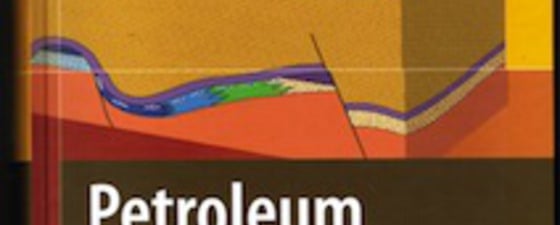Knut Bjørlykke (ed.) Springer, 2010It is massive! It has 500 condensed pages with numerous illustrations, most of them reflecting the advanced technology that is the basis for modern petroleum geoscience.
‘It’ is a textbook – a “basic introduction to disciplines relevant to petroleum exploration” – with lots of knowledge for the curious petroleum geoscience specialist. Regrettably, the book only includes “some aspects of petroleum production”, as the editor says in the Preface. Knowing that more and more emphasis will be put on producing what is left in the ground, and keeping the book’s title in mind, it would have been interesting to know more about how geoscientists can be involved in production, and what kind of knowledge is required.
Knut Bjørlykke, Professor Emeritus at the University of Oslo, has updated his previous textbook and now presents a version with several new chapters reflecting the incredibly rapid advancements in petroleum geoscience. Many of the new chapters are written by professionals with an outstanding reputation in the Norwegian petroleum community.
Taking into account that there are few other alternatives, it is assumed that this book will be used by both students and by professionals who need to update themselves with the latest knowledge about petroleum exploration and petroleum production.
Writing a textbook about petroleum geoscience is an ambitious task. The first question is of course what to include: “petroleum geology is not a well-defined academic subject”, as the editor and main author admits himself. With 22 chapters, each covering separate topics, he has been able to demonstrate the complexity of petroleum geoscience. The subjects discussed include sedimentology, geochemistry, stratigraphy, fluid flow, geomechanics, rock physics, structural geology, petroleum generation and migration. In addition, technologies used in finding and exploiting hydrocarbons, such as well logging and seismic, are also covered. Bearing in mind the possible importance of electromagnetic surveying (CSEM) in the future, it may have been appropriate to have covered this subject with a separate chapter.
It is noteworthy that this textbook has several chapters that deal with recent advancements and modern technology, in addition to classical subjects like generation, migration and trapping of oil and gas. We are, for example, given an introduction to fluid flow and geomechanics, rock physics and 4D seismic.
This book is written (in English) by a largely Norwegian team, and the final chapter is a 30-page account of the geology of the Norwegian continental shelf, nicely illustrated with a lithostratigraphic summary, maps, cross-sections and seismic. It should be very useful as an introduction for both students and others interested in the Norwegian offshore.
My main criticism is that there is a lack of reference to the “real world”. Too much theory is another way to put it. To take just one example: there is a two page discussion of barrier islands, seen from an academic viewpoint, but there is no reference to any fields in which barrier islands constitute the reservoir. I would have liked to have seen more examples from oil and gas fields around the world, the North West European continental shelf included. That would have been a considerable improvement.
However, there should be no doubt that the present book covers the basic needs for all students in petroleum geoscience. Moreover, because of its coverage of basic principles it should also be a valid reference for professionals who want to update themselves on subjects in which they do not have special expertise.





